“There is always the inflection point in a drawing-the point at which it takes on its own presence and becomes more than its content. There is also the point where others view it and it becomes their image. I know that if I create art, these points will occur, and I can work to control part of the process leading up to these points. Ultimately, however, not all of it is mine to control.” Mary Shindell
Mary explains Vector and Pixel files to me and another gallery visitor. And while I understand some things, I don’t understand all of what she says. To make it clear she describes how her lines are made. A Vector file makes a clean, intense line, she says as she shows me one and compares it to a pixellated line. Once I see the quality of the line, I understand. We discuss her digital drawings and compare them to traditional printmaking, both in quality and process. I suggest she teach a class ( teach me is what I really think).
There are three large works on paper, on the east wall of the gallery. Each of the compositions stands as a unique work though they connect directly through process. One design uses the other, and then again. Mary draws with graphite, inks, gouache, and she also draws using her computer.
Below are details from the large 42 x 42″ works on paper. Can you see how they connect? One is a digital photo of the original graphite drawing. The second is the original graphite drawing with added media, all completed by hand. The last one is computer generated and uses the other two.
Note: My photos are not perfectly aligned. I shoot the right side (first 3) and then the left (next 3 of the drawings.
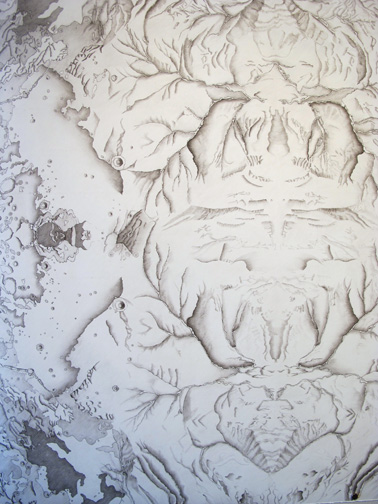
Left edge detail
Inflection Point: Estrellas, Moon
drawing, graphite, ink, digitally archived
42×42″
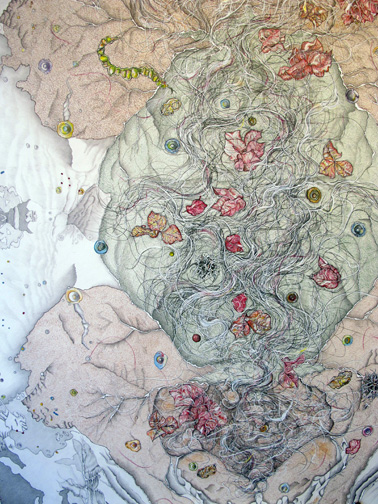
Left edge detail
Variant 1: Bougainvillea, Sweet gum, Seed Pods, Mesquite Beans, Moon Craters
drawing, graphite, ink, prisma, pastel
42 x 42″s.
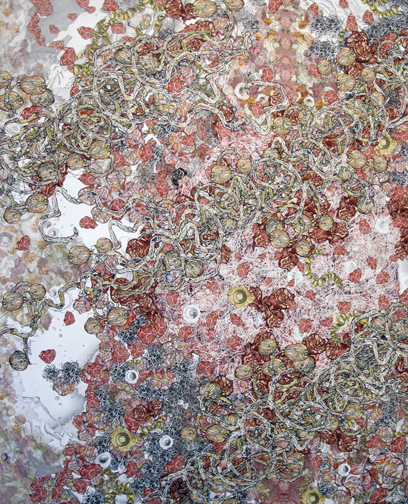
Left edge detail
Variant II: Fig, Bougainvillea, Sweet gum, Mesquite Beans, Moon Craters
digital drawing composited with graphite and ink archival ink jet print
42×42″
Mary places the viewer above the work. We hover perhaps in space, and see the top view of a multi-layered landscape that in this case includes: the moon, the Estrella Mountains, and the beautiful Arizona flora.
I look closely at the work and identify elements but then I have to stand back to take it all in. The brilliant details captivate.
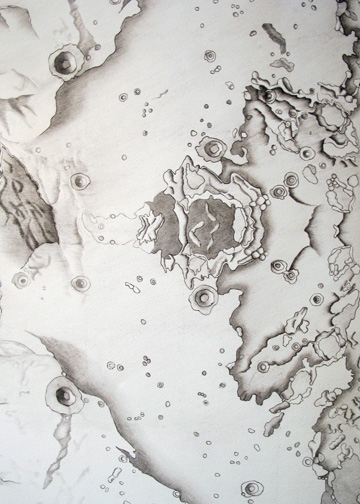
Right edge detail
Inflection Point: Estrellas, Moon
drawing, graphite, ink, digitally archived
42×42″
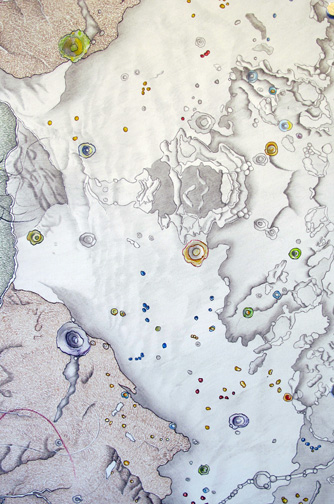
Left edge detail
Variant 1: Bougainvillea, Sweet gum, Seed Pods, Mesquite Beans, Moon Craters
drawing, graphite, ink, Prisma, pastel
42 x 42″

Right edge detail
Variant II: Fig, Bougainvillea, Sweet gum, Mesquite Beans, Moon Craters
Digital drawing composited with graphite and ink archival ink jet print
42×42″
Along the west wall Mary shows a series of small drawings and digital prints. She explains she works things out on these smaller works in between stages of the larger works. Here are photos of two and a detail shot of a third.
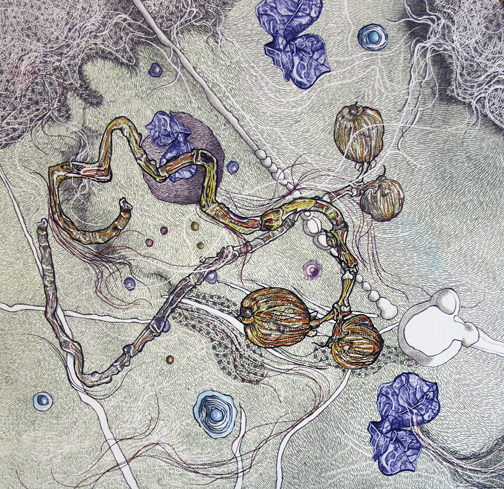
Fig Moon Drawing
Digital Drawing
composited with graphite and ink drawing on Arches Aquarelle, archival ink jet print
12×12″

Fig Moon
Drawing
Prisma and Gouache on Johanna
12×12″
I ask Mary about the title of the exhibition, Inflection Point. She explains the mathematical term. An inflection point is a point on a curve at which the curve changes from being convex to concave. I understand, I am familiar with the concept. She identifies it as a changing point, a point of transition.
I’ve known Mary for a long time – she continues to mesmerize me with her curiosity, her attention to detail and her growing skills. She is always on to something new and wonderful.
I will drop in to see the exhibition one more time – in case I missed anything.
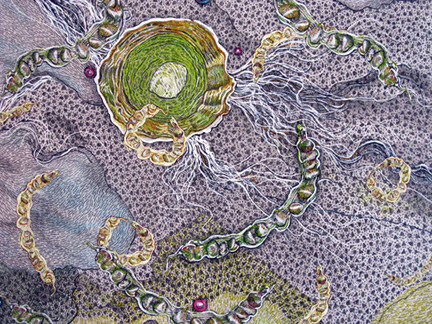
Detail: Mesquite Beans, Moon
Inflection Point drawings opened this First Friday and will run to the end of the month.
Who: Mary Shindell
What: Inflection Point drawings
Where: 515 arts – 515 East Roosevelt, Phoenix, AZ 85004
When: 1/2/2015 – 1/31/2015 (artist’s reception 1/16/2015)
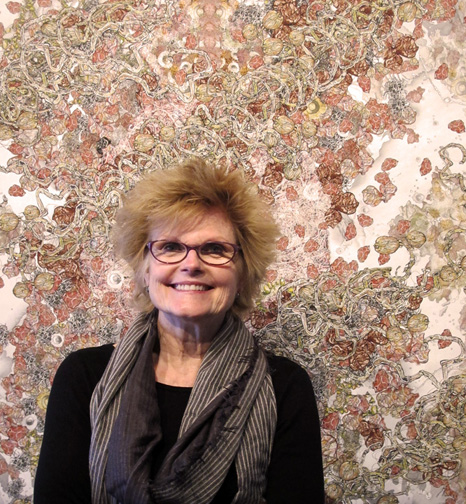




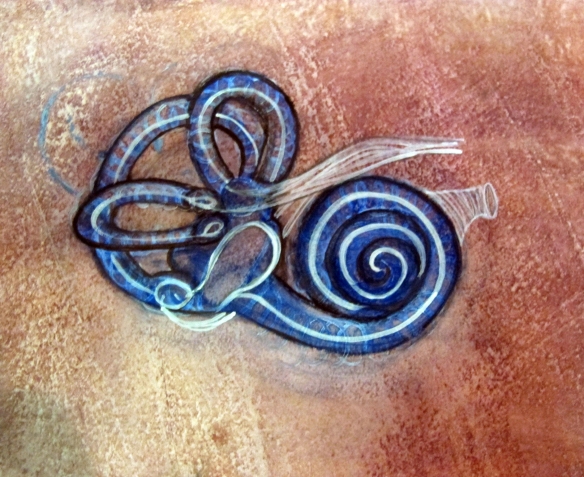


















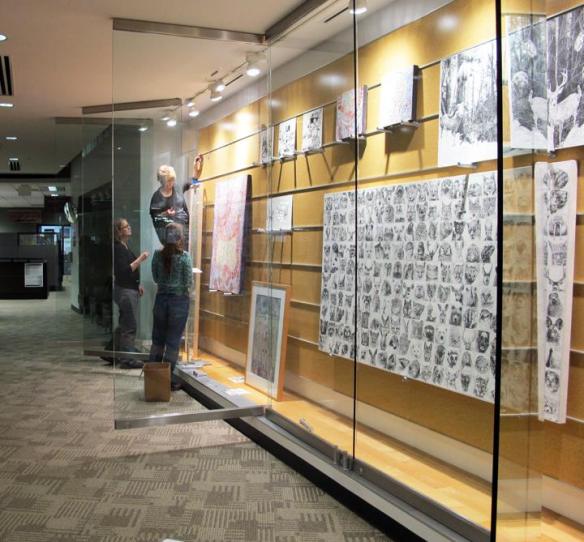




















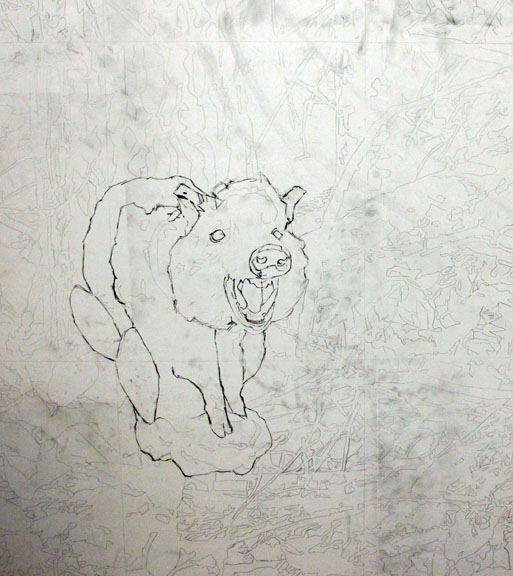
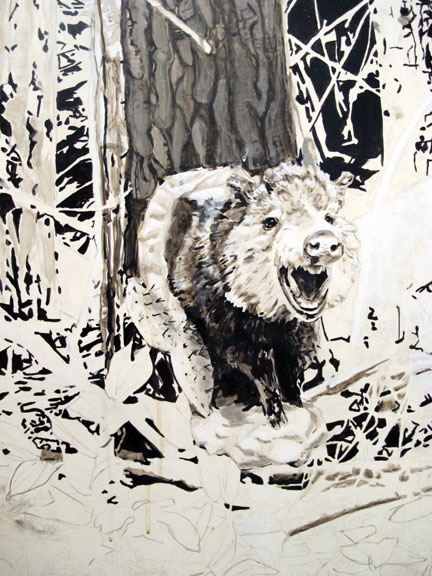

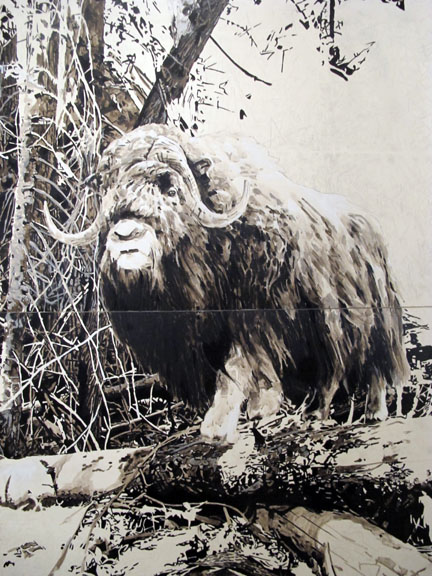
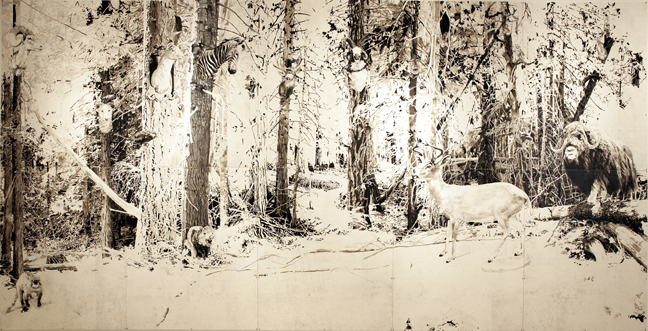
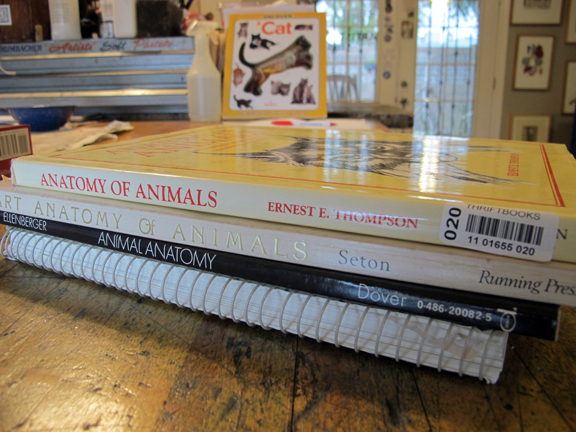 Yesterday the three of us discussed how we might be influencing each other. The few animals in my work are abstract and symbolic. My cat appears in one work, a snake and a frog in another. My inclusion of an animal and its anatomical structure is very different from Carolyn’s focus. Carolyn renders taxidermy, in a realistic manner, in a constructed natural setting. Reread that last sentence.
Yesterday the three of us discussed how we might be influencing each other. The few animals in my work are abstract and symbolic. My cat appears in one work, a snake and a frog in another. My inclusion of an animal and its anatomical structure is very different from Carolyn’s focus. Carolyn renders taxidermy, in a realistic manner, in a constructed natural setting. Reread that last sentence.